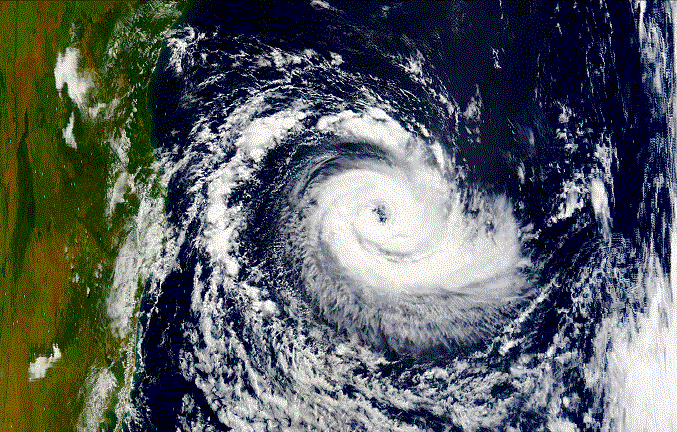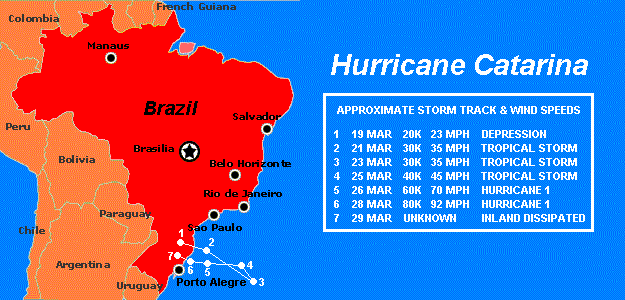|
Reference: http://science.nasa.gov/headlines/y2004/02apr_hurricane.htm
When the storm crashed into Brazil, local observers weren't
even sure it was a hurricane.
Brazil has no ground-based network of weather stations to measure
wind and
rain from tropical storms. "There are no Hurricane Hunters
in Brazil..." adds
NASA hurricane researcher, Robbie Hood, "...the storms are
so rare."
Space satellites, however, gathered a great deal of data.
"NOAA polar orbiting satellites
measured the temperature of the storm's eye..." says climate
scientist Roy Spencer
of the University of Alabama, Huntsville "...that told us
how fast the winds were moving."
It was a category 1 hurricane, he says, an estimate confirmed
by NASA's wind-measuring
QuikScat satellite. In addition, NOAA's GOES satellites and NASA's
Terra and Aqua satellites
took pictures of the storm at microwave, infrared, and visible
wavelengths, allowing scientists to
monitor the motions of moisture and heat energy through the storm--valuable
data, indeed.
The TRMM spacecraft, a joint mission of NASA and the Japanese
space agency, flew over
the storm several times in the days before landfall, and it gathered
perhaps the most
revealing data of all. TRMM, short for Tropical Rainfall Measuring
Mission, carries a
precipitation radar, the only one in space. Beaming down through
the clouds, the radar
illuminated spiraling bands of rainfall; false color images of
the storm resemble a pinwheel
galaxy! Combining data from the radar
and the spacecraft's microwave imager, researchers
can estimate rain rates throughout the hurricane...from top to
bottom, from eye to edge.
"This whole episode highlights the advantages of satellites
for hurricane studies,
especially where there are no aircraft standing by to fly through
the storms,"
says Hood. "Satellites can monitor storms in all parts of
the world."
But a problem remains...what to call them?
The World Meteorological Organization
maintains a list of hurricane names for every part of the world,
except the south Atlantic.
Sadly, the March 28th storm did damage to remember: 500 homes
ruined, fishing boats
sunk, at least two people dead and 1,500 more homeless. Brazilians
are going to be
talking about the storm for a long time, and wondering about
hurricanes to come.
South Atlantic hurricanes need names. Somebody somewhere,
probably, is making a list. |


